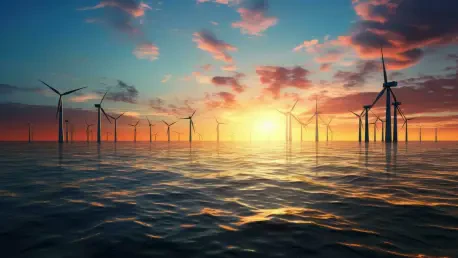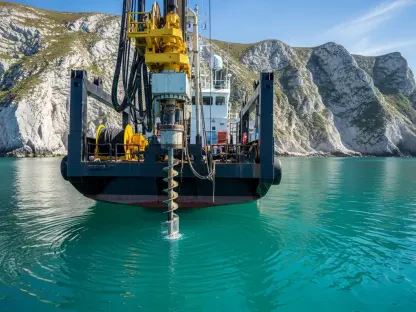In a striking shift within renewable energy markets, Norway has initiated its first competitive tender for floating offshore wind energy, targeting the Utsira Nord site off the southwest coast. With its introduction, Norway aims to tackle the limitations traditional offshore wind technologies face on its deep-sea shores. This move represents not only a significant advancement in renewable technology but also a reflection of the nation’s dedication to economic and technological leadership in floating wind systems.
Pioneering the Future of Renewable Energy in Norway
This pivotal move stems from Norway’s historical evolution as a leader in renewable energy, a lineage initially rooted in its extensive hydroelectric power capability. The transition to floating wind technology aligns with the country’s geographical necessity, where fixed-bottom turbines prove ineffectual due to deep waters. As the world looks on, Norway sets a strong precedent by using its natural advantages to pursue floating wind solutions, maintaining its innovative trajectory in clean energy sectors.
Market Insights: Norway’s Competitive Approach to Offshore Wind
Driving Innovation Through Strategic Initiatives
Norway’s announcement to offer up to 500 MW capacity in floating offshore wind with capped subsidies of 35 billion Norwegian crowns underscores a strategic approach focused on innovation and cost efficiency. Norway sees the tender as a chance to leap forward in technological innovations, intending to resolve economic challenges within the sector while anticipating obstacles like global operational setbacks. This plan reveals Norway’s commitment to evaluating the economics of floating wind as it navigates financial constraints.
Navigating Economic Dynamics and Market Complexities
Norway’s foray into floating wind technology introduces complex market dynamics. Careful economic evaluations and regulatory navigation are required to address varying economic opportunities and regulatory frameworks in other regions adopting similar technologies. Norway’s phased allocation process—beginning with rights allocation, followed by project maturation, and concluding in a subsidy auction—aims to mitigate these complexities by promoting transparency and consistency. However, not only the investors but also the environment must be considered to ensure an optimal balance between economic pursuits and ecological custodianship.
Embracing Regional Developments and Expert Perspectives
As Norway’s initiative advances, regional differences and innovations offer promising potential to reshape established paradigms. The nation’s alignment with EU state aid regulations highlights both aligning with broader industry norms and challenges related to regional compliance. Experts suggest constant adaptation is necessary to meet the evolving technologies and market expectations. Overcoming prevalent myths about offshore wind, particularly its feasibility in challenging oceanic climates, constitutes a critical priority for stakeholders involved.
Anticipating Future Trends in the Global Offshore Wind Arena
Norway’s initiative in floating offshore wind provides a blueprint that could influence future trends in the industry globally. Technological advancements in turbine efficiency, material science, and digital monitoring are poised to fuel further progress. As shifts in global energy demand continue alongside policy incentives, investment landscapes are expected to transform. Cross-border energy initiatives are emerging, enabling countries to tailor floating wind technologies suited to their marine environments based on Norway’s successful model.
Strategic Insights and Recommendations for the Renewable Sector
The insights from Norway’s strategized approach in floating offshore wind energy provide actionable recommendations: fostering collaborations to gain from Norway’s experiences, businesses and professionals should harness sustainable innovation and enhance research and development. Understanding the underlying strategies and methodologies can guide policymakers to ensure that energy solutions are both ecologically and economically viable over the long term.
Norway’s competitive tender at Utsira Nord has significantly impacted the offshore wind sector. It has highlighted an era of innovation and sustainable solutions to global energy challenges. As industries draw insights from Norway’s progress, there is a call to leverage these lessons, adapting and innovating within the renewable landscape. The commitment to sustainable energy solutions remains critical for shaping the future trajectory of global power systems.









